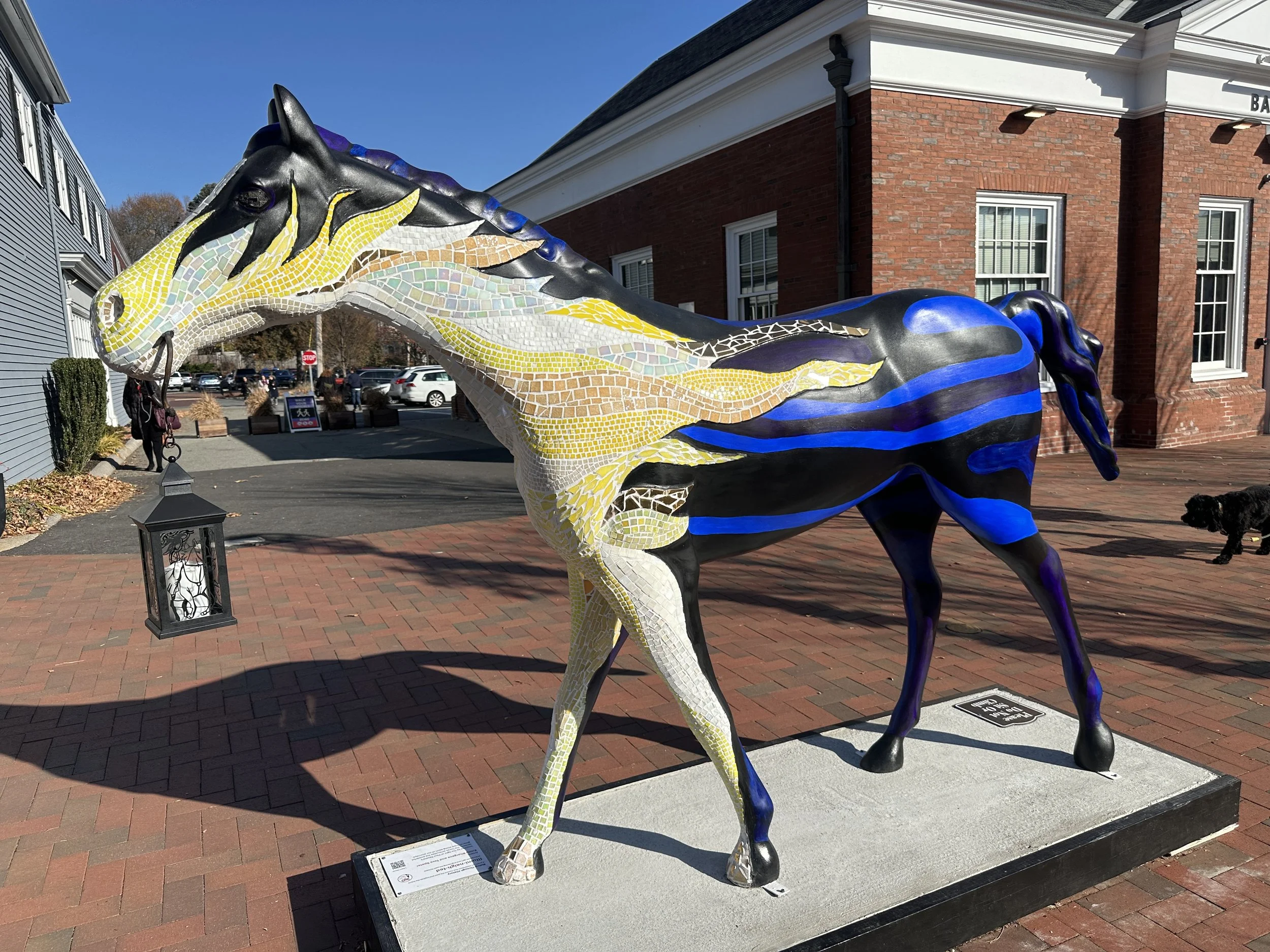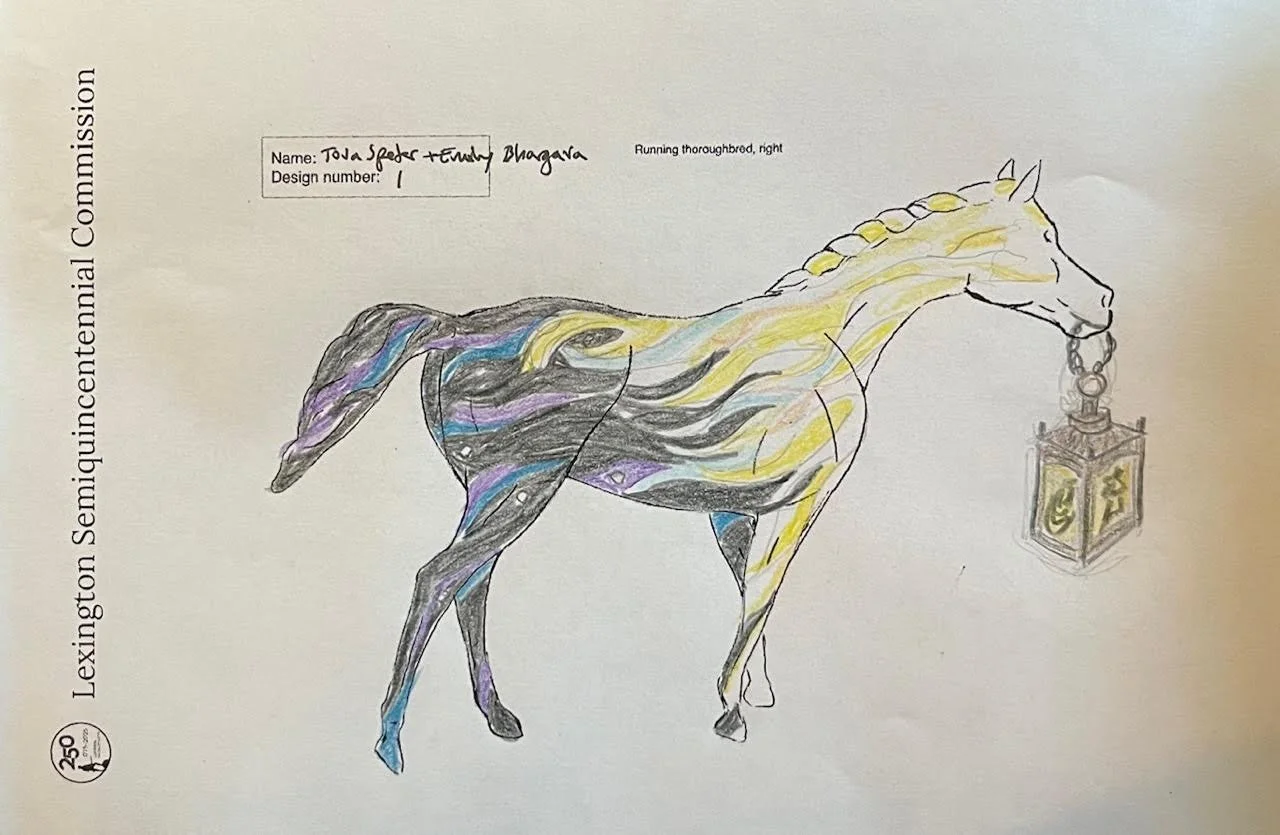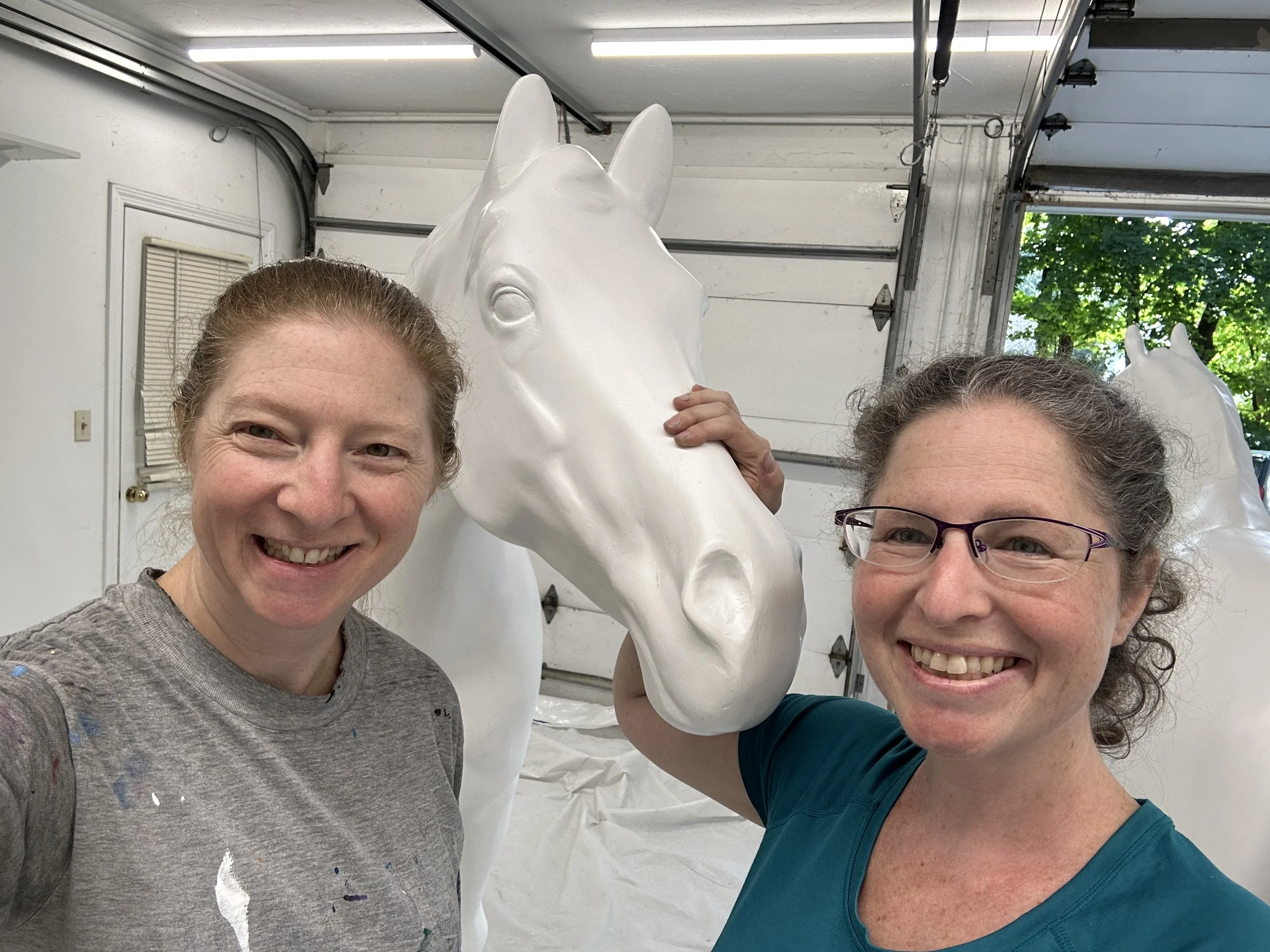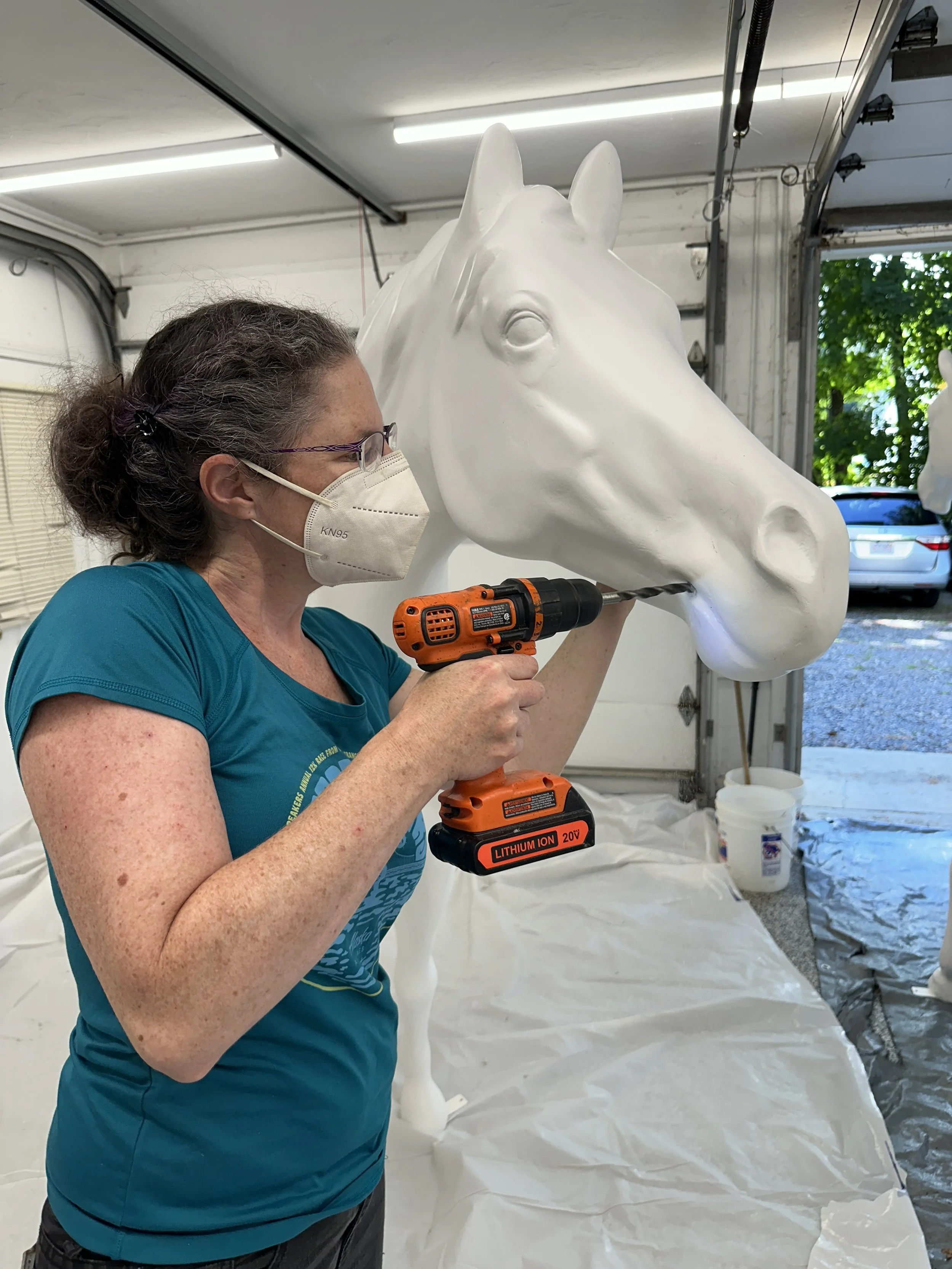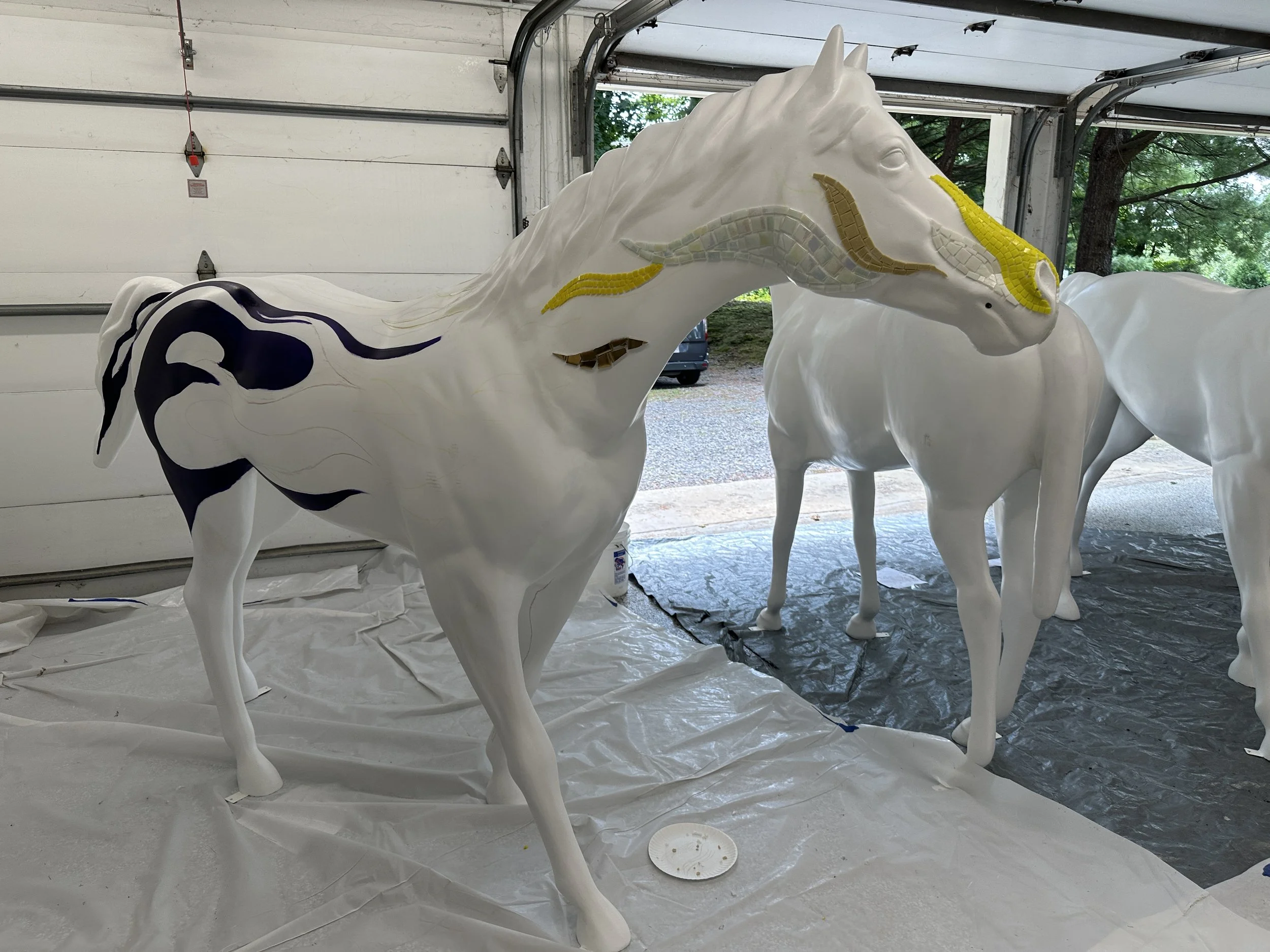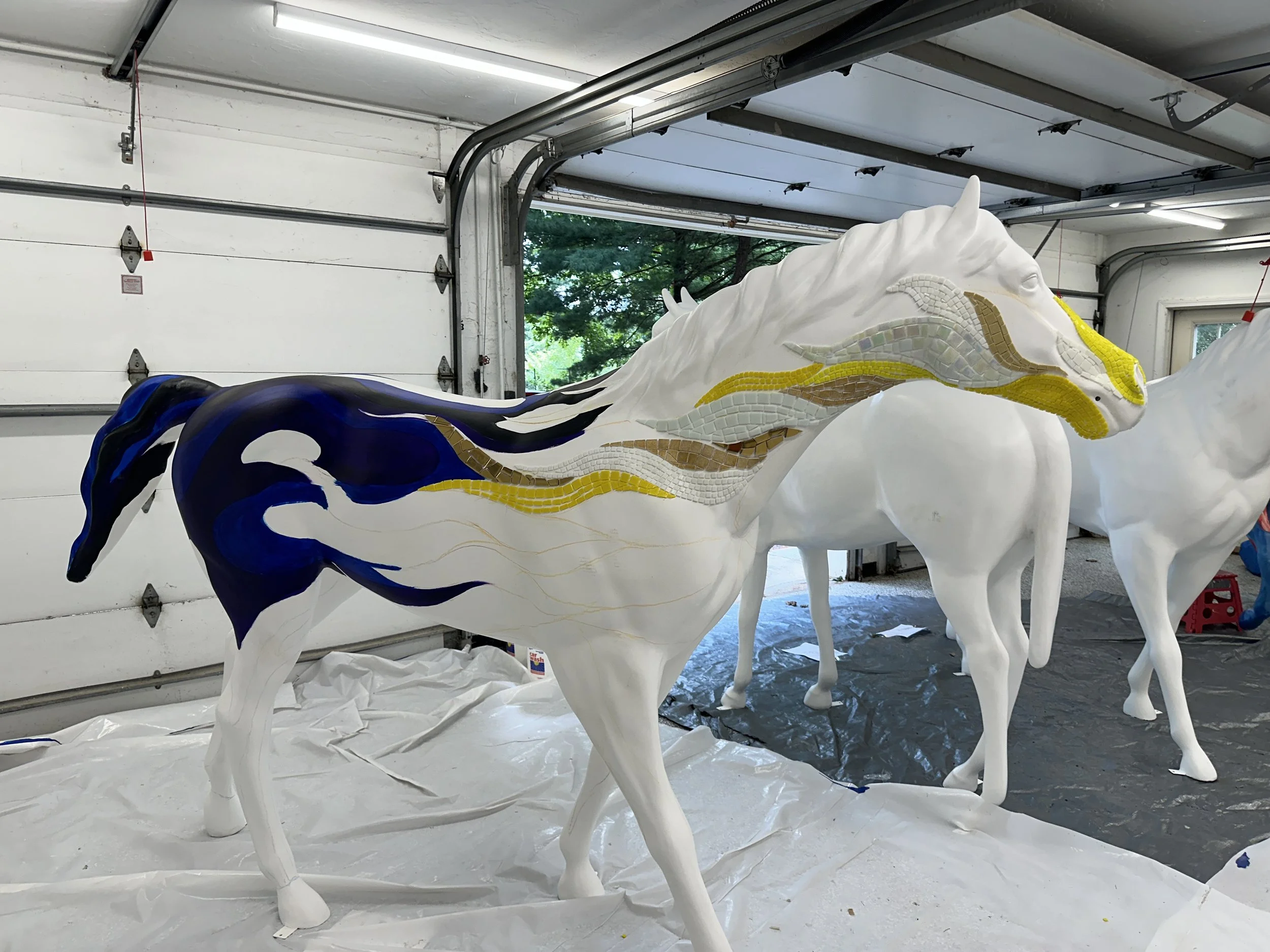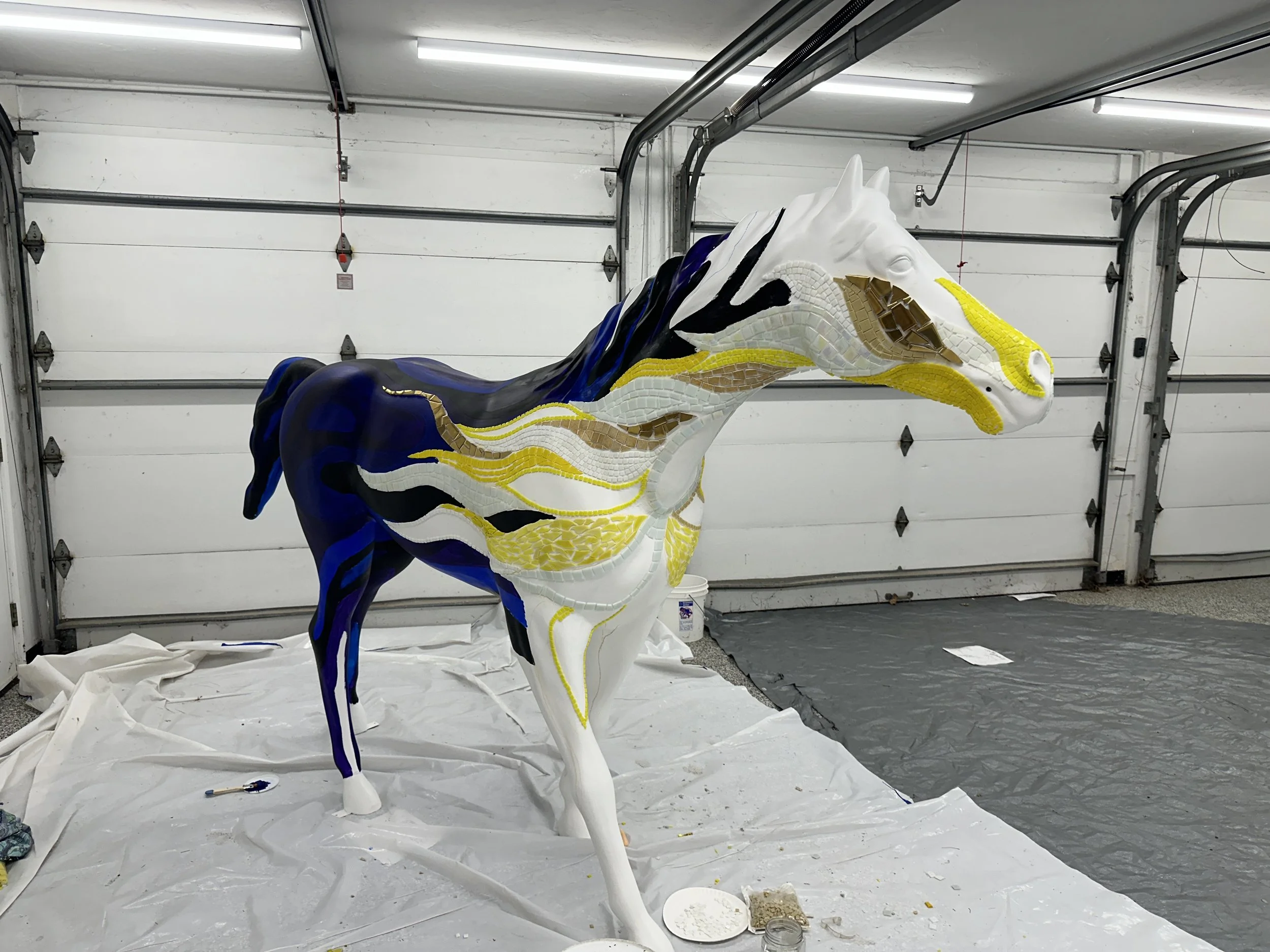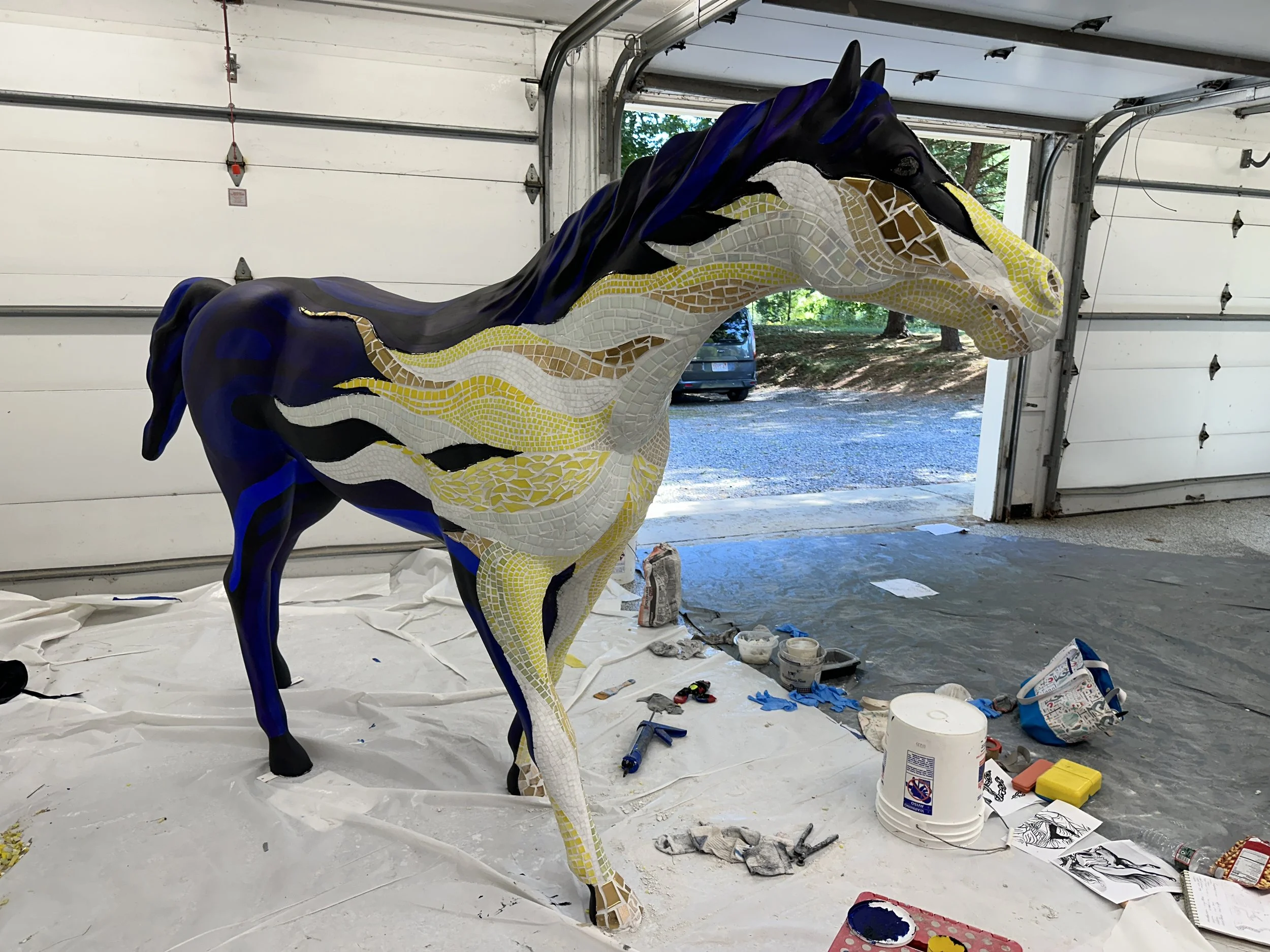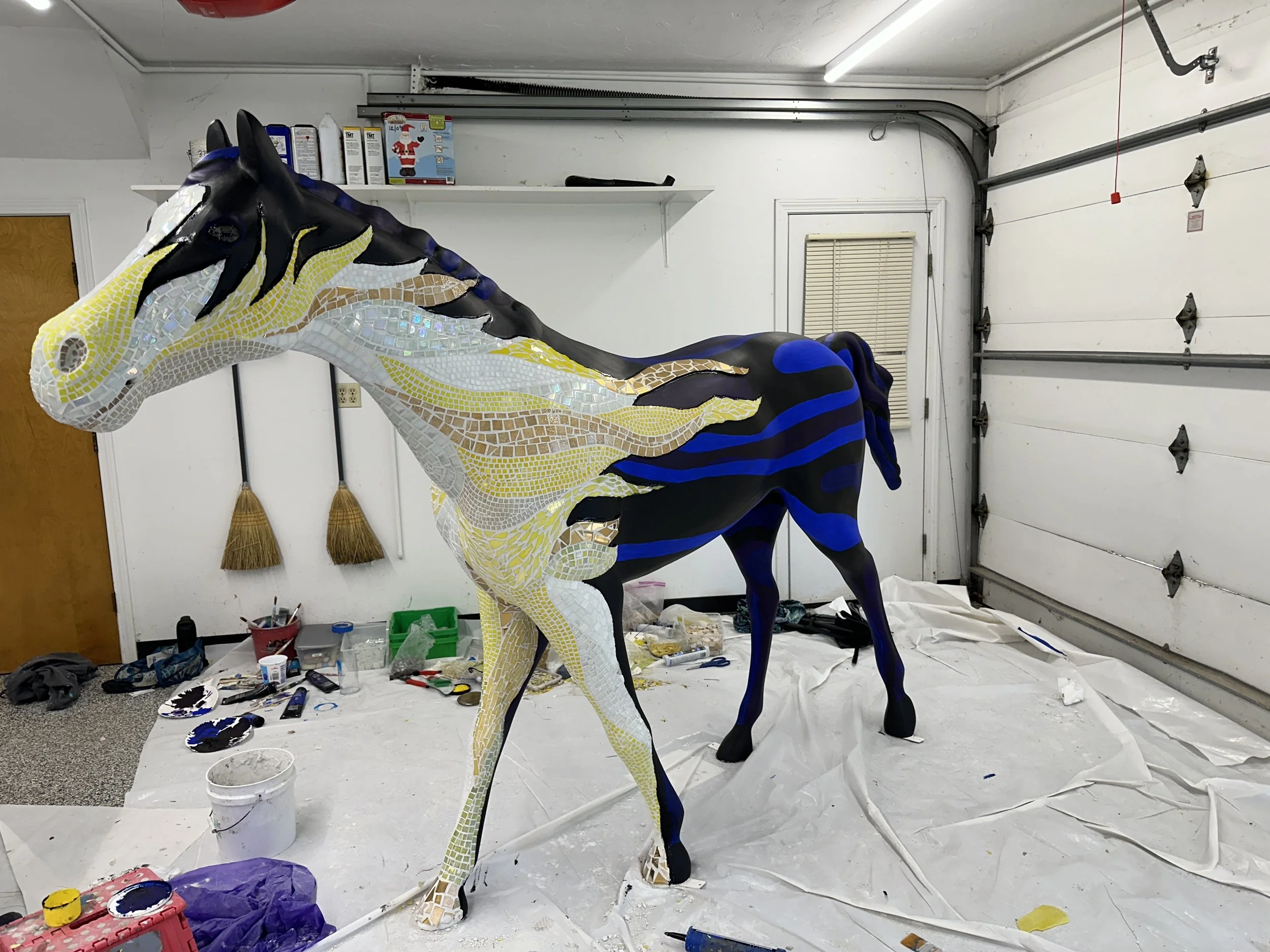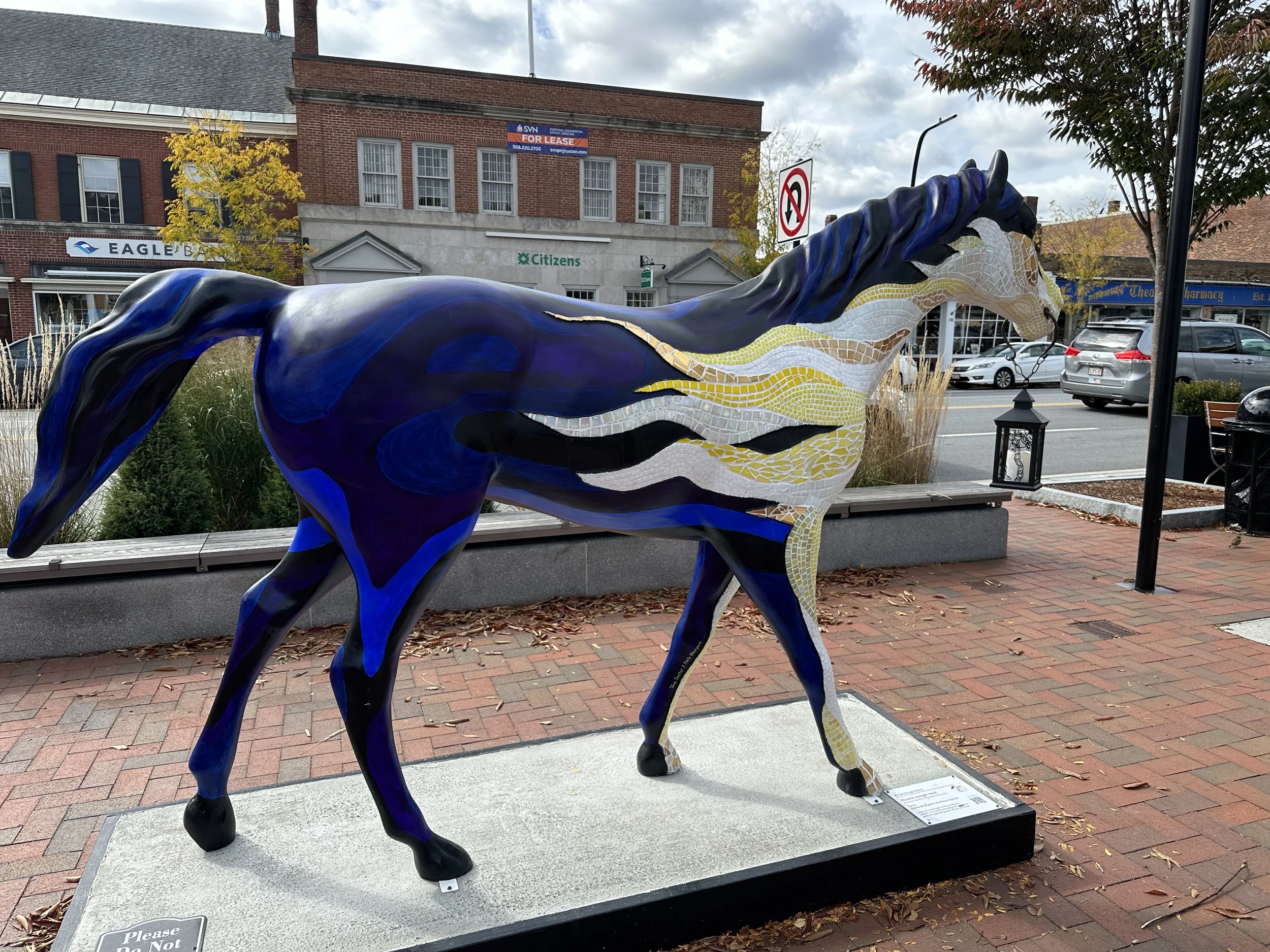Painted Horses
Emily Bhargava and I teamed up to create this painted/mosaic horse as part of Lex250’s Riding Through History public art initiative public art initiative that commissioned artists to design a horse installed along Massachusetts Ave to promote not only Lexington’s storied equestrian heritage, but the legendary journeys of Paul Revere, William Dawes, and others, as they rode through the countryside on April 18, 1775.
Illumi-neigh-ted
sharing past light and brightening the path forward.
Inspired by the light of Paul Revere’s lantern - both literally and metaphorically, our horse embodies the light and hope that was not only carried during that midnight ride long ago, but also that we carry along each of our journeys. The horse is tiled and painted with light emanating from the lantern contrasting against darker tones that mimic the midnight sky.
Artists Tova and Emily both work as community artists who bring people together to share stories and build connections. The Paul Revere- inspired lantern the horse is carrying is illuminated at night and, in turn, illuminates overlooked stories from the time of the revolution. Each side has a design that highlights an often untold story of women, African-Americans, children, and indigenous communities.
The first side has an image of a woman sewing. Women contributed a lot to society during the late 18th century (and always) both domestically and militarily. They may have sewn clothing for their families and also sewed uniforms, clothes, and blankets for the soldiers. One Massachusetts woman, Deborah Sampson, once an indentured servant, escaped and joined the army after disguising herself in men's clothes. She fought for almost two years before being detected and she was the only woman to earn a full military pension for participation in the Revolutionary army.
The second side shows a chain, symbolizing the slavery that continued in Massachusetts through the revolutionary war era.
The third side shares an image of a young girl riding a horse. Turns out Paul Revere wasn't the only one riding to spread the word about an upcoming British attack. Sybil Luddington was only 16 and she apparently rode twice as far as Paul Revere!
The fourth side honors the indigenous communities that have lived on this land far longer than the colonists who fought in the war. Indigenous agriculture, arts and engineering were, and despite their repression remain, the foundation upon which Lexington and other Massachusetts towns grew.
As you look at the way the light is embodied in the horse, you are encouraged to consider the multiple pieces of mosaic tiles as multiple stories that are all important to keep in mind as we remember the history of revolutionary times.

